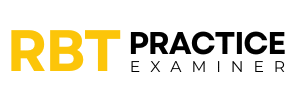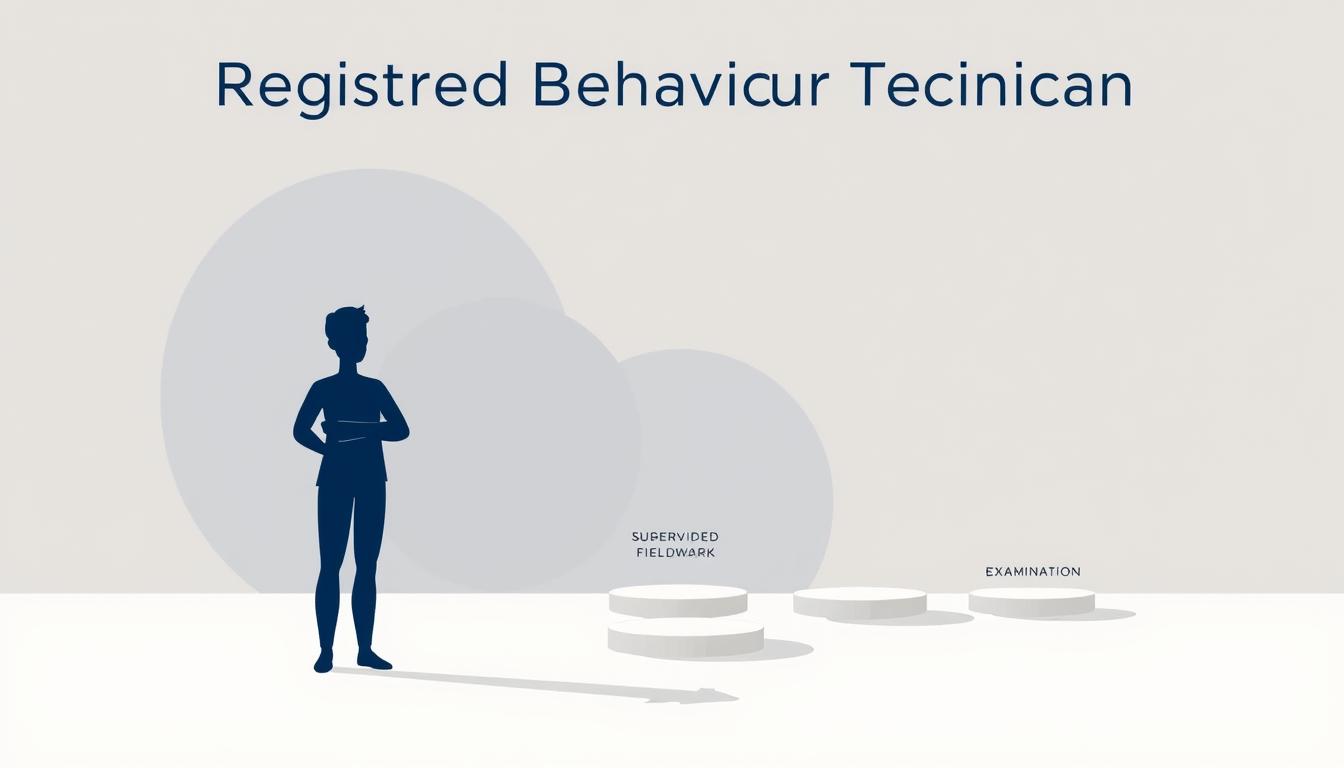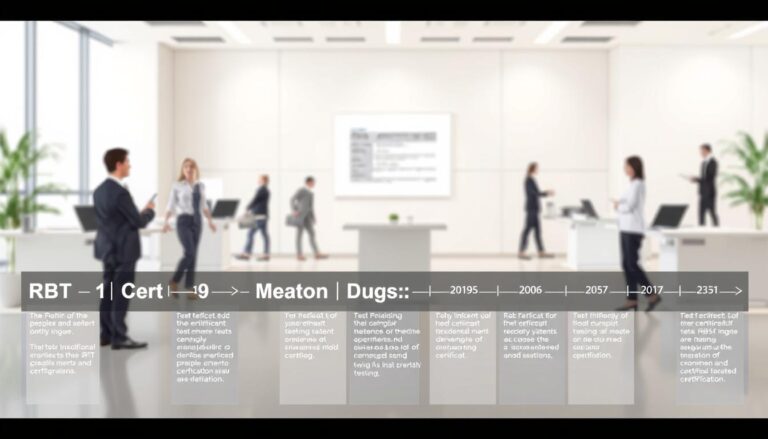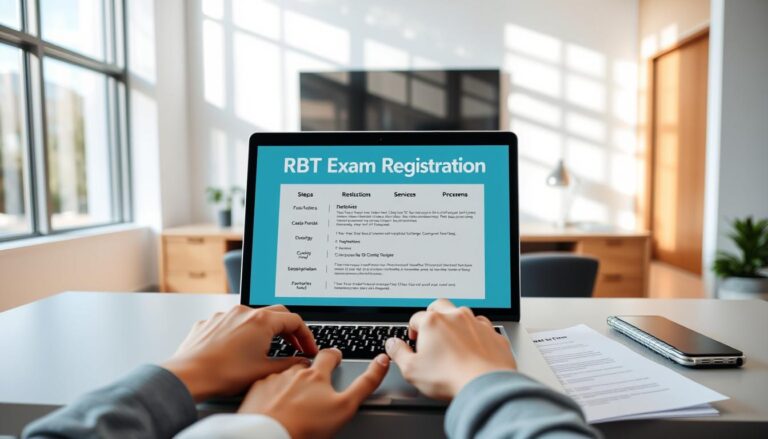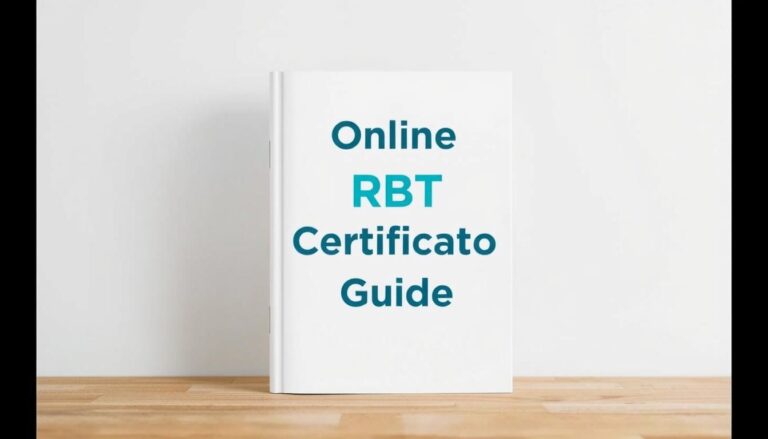Smart Steps to Becoming a Registered Behavior Technician
Starting a career as a Registered Behavior Technician (RBT) is a great chance to help people with developmental challenges. It’s important to know how RBTs help in Applied Behavior Analysis (ABA) therapy.
Training to be an RBT is a clear path for those who want to support people with autism and other conditions. This job needs dedication, kindness, and a desire to grow professionally.
To become an RBT, you must go through a detailed certification process. This includes education and special training. It’s all about ensuring you provide top-notch care and are very skilled.
This guide will show you the main parts of RBT certification. We’ll cover the training, skills, and job chances for future behavior technicians. Get ready to learn about the steps to a fulfilling career.
Understanding the Role of a Registered Behavior Technician
Registered behavior technician training is a rewarding career for those who love helping people with behavioral challenges. RBTs are key in applied behavior analysis (ABA) therapy. They work closely with clients to apply important treatment plans.
Starting as an RBT requires special skills and a lot of care for patients. It’s important for those interested to know how deep and fulfilling this job can be.
Core Responsibilities and Daily Tasks
RBTs do vital work that helps clients move forward:
- Implementing behavior intervention plans
- Collecting and recording behavioral data
- Conducting one-on-one therapy sessions
- Collaborating with supervising behavior analysts
Work Settings and Career Opportunities
Steps to become an RBT lead to many different work places:
| Work Setting | Typical Clients |
|---|---|
| Special Education Schools | Children with developmental disabilities |
| Behavioral Health Clinics | Individuals across age ranges |
| Home-Based Services | Families seeking personalized interventions |
Impact on Client Care and Treatment
RBTs are transformative professionals who help people gain important life skills. They use proven methods to improve communication, social skills, and more.
The training for RBTs is thorough. It prepares them to make a real difference in people’s lives. It focuses on both technical skills and caring for others.
Essential Requirements for RBT Certification
To get RBT certification, you must meet certain rules set by the Behavior Analyst Certification Board (BACB). You need to go through a detailed process. This ensures you provide top-notch behavioral health services.
The main steps to become a Registered Behavior Technician are:
- Age Requirement: You must be at least 18 years old
- High school diploma or an equivalent
- A clean background check with no criminal history
- Finishing a 40-hour training program
- Passing the official RBT competency test
Having the right education is key in the RBT certification journey. You don’t need a college degree. But, you must show you know a lot about applied behavior analysis (ABA).
Background checks are very important for RBT certification. The BACB asks for a detailed screening. This checks if you’re trustworthy and professional. It’s to keep clients safe and uphold high standards.
Getting certified means you’ll face a tough test. It checks your knowledge and skills. You need to be dedicated, detail-oriented, and really care about helping people with behavioral issues.
Smart Approach to Becoming an RBT: A Comprehensive Overview
Starting a career as a Registered Behavior Technician (RBT) needs a smart plan. The path to becoming an RBT has important steps that require hard work and focus. A good strategy for RBT training can make getting certified easier.
To become an RBT, first understand the certification process. Those aiming for this career must go through certain education and training steps.
Educational Prerequisites
Your RBT journey starts with basic education. You usually need to:
- Be at least 18 years old
- Have a high school diploma or equivalent
- Pass a background check
- Finish a detailed training program
Training Components
Good RBT training covers many areas. The certification includes:
- 40-hour training course on key behavioral principles
- Direct supervision by a Board Certified Behavior Analyst (BCBA)
- Competency assessment
- Written exam
Timeline Management
Successful RBT candidates plan their timeline well. Usually, it takes 2-3 months to finish, depending on your situation and resources.
By taking a smart approach to becoming an RBT, you can confidently go through the certification process. With careful planning, hard work, and a commitment to learning, you can reach your goal of becoming a Registered Behavior Technician.
Selecting an Accredited RBT Training Program
Choosing the right registered behavior technician training program is key to starting your career in applied behavior analysis. The quality of your training affects your professional skills and future job chances.
When looking at registered behavior technician training options, consider these important factors:
- BACB (Behavior Analyst Certification Board) accreditation
- A full curriculum that covers key behavioral principles
- Teachers who are experienced and qualified
- Learning formats that fit your needs (online and in-person)
- Hands-on training parts
For the best RBT training, look for programs that offer:
- Interactive learning experiences
- Real-world case studies
- Mentorship chances
- Help with exam prep
Your chosen program should match your learning style and career goals. It should teach you both theory and practical skills in behavior intervention and data collection.
Check the program’s success by reading student testimonials, looking at certification pass rates, and seeing if they help with job placement. A top-notch registered behavior technician training program will give you the skills to succeed in this field.
Key Components of RBT Training Curriculum
Registered behavior technician training is all about learning to help people with behavioral challenges. It teaches you how to use structured learning methods. This way, you can support individuals effectively.
To become a great RBT, you need to understand several important areas. These areas are the base of good behavioral intervention.
Fundamental Behavioral Principles
The heart of RBT training is learning about the key principles of behavior. These include:
- Positive and negative reinforcement techniques
- Behavior modification strategies
- Antecedent-behavior-consequence (ABC) analysis
- Stimulus control and response generalization
Precision in Data Collection Methods
Being good at collecting data is key for RBTs. You’ll learn different ways to track and measure how well someone is doing:
- Frequency recording
- Duration recording
- Interval recording
- Momentary time sampling
Professional Ethics and Conduct
Being ethical is very important in this field. RBT training covers all the rules for being professional, including:
- Respecting client confidentiality
- Maintaining appropriate professional boundaries
- Understanding Behavior Analyst Certification Board (BACB) ethical codes
- Implementing client-centered intervention strategies
By learning these key points, future RBTs can offer top-notch, caring support.
Mastering the 40-Hour Training Requirement

To become a Registered Behavior Technician (RBT), you must finish a 40-hour training program. It’s key to know what this training covers. This is the first step to getting certified.
The 40-hour training is a big deal in becoming an RBT. You need to be focused and plan well to pass it. It’s a big challenge, but with the right approach, you can do it.
- Create a structured study schedule
- Utilize multiple learning resources
- Engage actively during training sessions
- Practice real-world scenario applications
When you train to be an RBT, you learn important skills. These skills are essential for your job. They include:
| Training Component | Key Skills Developed |
|---|---|
| Behavioral Principles | Understanding client behavior patterns |
| Data Collection | Accurate tracking and documentation |
| Ethical Guidelines | Professional conduct and client safety |
Managing your time is very important during the 40-hour training. Candidates should stick to a study routine and get help from experts. Many programs offer flexible learning, like online classes and workshops.
Here are some tips to make the most of your training. Take good notes, join group talks, and ask questions when you’re unsure. See the training as a chance to grow professionally and improve your skills.
Preparing for the RBT Competency Assessment
To get RBT certification, you need to understand the competency assessment well. This test makes sure you meet top standards in applied behavior analysis.
The assessment is a key step in your career. It checks your skills and knowledge. Those who pass show they care deeply about RBT training and client care.
Key Assessment Components
- Practical skill demonstration
- Theoretical knowledge examination
- Ethical conduct evaluation
- Behavior intervention techniques
- Data collection and analysis
Effective Practice Strategies
Getting ready for the RBT competency assessment is key. Here are some tips:
- Do lots of role-playing scenarios
- Practice writing down your work
- Learn all about ABA
- Get advice from seasoned RBTs
Navigating Common Challenges
Many people feel nervous during the assessment. Knowing what might go wrong helps you prepare:
- Manage your time well during the test
- Stay calm when being watched closely
- Show you can communicate clearly
- Be flexible in different situations
With good preparation and confidence, you’ll do great in your RBT competency assessment.
Navigating the Background Check Process
The background check is a key part of becoming an RBT. It makes sure services are safe and trustworthy. People wanting to be Registered Behavior Technicians must pass a detailed background check.
When you’re getting certified, you’ll face a deep background screening. This usually includes:
- Criminal history review
- Child abuse registry check
- FBI fingerprint verification
- State-specific background screening
Here are some tips for a smooth background check:
- Disclose all previous incidents accurately
- Understand what might stop you from getting certified
- Get help from those who oversee certification
- Always be open and honest
The Behavior Analyst Certification Board (BACB) wants a clean background for safety. Even small mistakes might not stop you, but big ones could. If you’re worried, talk to experts to learn what you need.
Getting ready is important to become an RBT. You’ll need to collect all your documents. This includes court records, explanations for past issues, and references to support your application.
Studying Effectively for the RBT Exam
Getting ready for the Registered Behavior Technician (RBT) exam needs careful planning and hard work. You must learn more than just facts. It’s about building your confidence and knowledge through smart study methods.

On your path to becoming a certified RBT, you’ll need to prepare well and use smart study techniques. Your success in the exam depends on many things. These include the resources you choose, how you study, and how you prepare your mind.
Essential Study Resources
Picking the right study materials is key to doing well on the exam. Here are some top picks:
- Official BACB® exam prep materials
- Comprehensive RBT training books
- Online practice exams
- Professional ABA therapy study guides
- Digital flashcard apps
Strategic Test-Taking Approaches
Learning how to take the RBT exam well is important. Here are some tips:
- Get to know the question types
- Practice reading questions actively
- Get rid of answers you know are wrong
- Prepare for test anxiety
- Review important behavioral principles
Time Management for Optimal Preparation
Creating a study plan is essential for RBT exam prep. Make a realistic schedule that fits your life. Break your study into smaller, daily tasks. This helps avoid cramming at the last minute.
With hard work and the right strategy, you can get RBT certified. Stay focused, use different study tools, and keep a positive attitude during your prep.
Building Professional Networks in ABA Therapy
Building a strong professional network is key to becoming an RBT. It opens doors to growth and learning in Applied Behavior Analysis (ABA) therapy.
As you work towards becoming an RBT, networking is very important. It can lead to new opportunities for learning and jobs. Your connections can offer valuable advice, mentorship, and job leads.
- Join professional organizations like Behavior Analyst Certification Board (BACB) associations
- Attend regional and national ABA therapy conferences
- Participate in online forums and professional social media groups
- Connect with experienced practitioners in your local area
Digital platforms are great for networking. Sites like LinkedIn, ABA therapy forums, and Facebook groups are useful. They let you connect with others, share experiences, and keep up with trends.
To network well, you need to be active. Go to webinars, join discussions, and show your love for ABA therapy. Your network can become a supportive community that helps your career.
- Share your professional achievements
- Ask thoughtful questions
- Offer support to fellow professionals
- Maintain consistent and professional communication
Networking is more than just collecting contacts. It’s about building real, helpful relationships that help you grow as an RBT.
Maintaining RBT Certification
Getting RBT certified is just the start. Keeping your certification up means you must keep learning and growing. The RBT process needs you to always improve your skills for top-notch service.
It’s important to keep up with new methods and rules from the Behavior Analyst Certification Board (BACB). This keeps your skills sharp and shows you care about your clients.
Continuing Education Requirements
Keeping your RBT certification means following certain education rules:
- Complete annual renewal requirements
- Take part in ongoing training
- Follow ethical standards
- Send in all needed documents
Renewal Process
The renewal steps for RBT certification are key:
- Send in a renewal form to the BACB
- Pass a supervision test
- Finish required education hours
- Pay the renewal fee
You need to finish these steps before your certification runs out. Keeping track of deadlines is vital in the RBT world.
Developing Essential Clinical Skills

Registered behavior technician training is all about mastering complex skills. These skills are key to effective applied behavior analysis (ABA) therapy. Professionals need a wide range of techniques to help clients and provide top-notch care.
The best RBT training focuses on several important skills:
- Effective communication with clients and families
- Precise data collection and interpretation
- Implementing behavior intervention plans
- Maintaining professional boundaries
- Adapting interventions to individual client needs
Good communication is at the heart of RBT training. RBTs must connect well with clients, understanding their communication styles and emotional needs. Active listening and clear, caring communication build trust and support therapy goals.
Data collection is another vital skill for RBTs. They need to accurately record client behaviors, track progress, and share insights with supervisors. This requires careful attention to detail and the ability to analyze behavior objectively.
Staying up-to-date with skills is essential in this field. RBTs should keep learning, get supervision, and grow professionally. By following these best practices, technicians can improve their skills and help clients more effectively.
Understanding Ethical Guidelines and Compliance
Understanding ethics is key in the RBT certification process. Registered Behavior Technicians help people with behavioral challenges. They must follow high standards of conduct and ethics.
The Behavior Analyst Certification Board (BACB) has a detailed ethics code. It’s a vital guide for RBTs. Best practices for RBT training stress the importance of these guidelines. They ensure client safety and uphold professional integrity.
Core Ethical Principles for RBTs
- Maintain client confidentiality at all times
- Prioritize client welfare and well-being
- Practice within defined professional competence
- Avoid conflicts of interest
- Provide transparent and honest communication
Professional Boundaries in Practice
Setting clear professional boundaries is vital in ABA therapy. RBTs must keep a professional relationship that:
- Respects client personal space
- Avoids inappropriate personal interactions
- Maintains professional distance
- Protects client emotional and physical safety
Ethical conduct is not just a requirement—it’s the foundation of effective behavioral therapy. RBTs who show professionalism and follow ethical guidelines greatly help applied behavior analysis. They make it more credible and effective.
Career Advancement Opportunities for RBTs
Registered Behavior Technicians (RBTs) have many career growth chances in applied behavior analysis. To become an RBT, it’s important to plan for your future and specialize in areas you’re interested in.
After getting your RBT certification, you can take many paths to grow your career. Becoming an RBT is just the start of a fulfilling journey in behavioral health.
- Board Certified Assistant Behavior Analyst (BCaBA) – A great step for RBTs who want to move up
- Board Certified Behavior Analyst (BCBA) – The top goal for many in the field
- Specialized areas like:
- Autism intervention
- Organizational behavior management
- Pediatric behavioral health
Keeping up with education is key to moving forward in your career. RBTs can improve their skills by:
- Taking advanced training programs
- Attending professional workshops
- Doing graduate-level courses in behavior analysis
Connecting with others in the field and joining associations can lead to mentorship and new opportunities. The field of applied behavior analysis is expanding, giving RBTs many ways to grow professionally.
To succeed in your career, you need to be committed, keep learning, and love helping others improve their behavior.
Conclusion
Starting your journey to become an RBT is a big step in applied behavior analysis. It takes hard work, planning, and a real desire to help people with autism and other developmental challenges. This guide will help you understand how to get RBT certified with confidence.
To be a great Registered Behavior Technician, you need to learn key skills and follow professional ethics. You also have to care deeply about your clients. The training and tests you go through make sure you can help people well.
ABA therapy is a growing field with lots of chances to make a difference. Getting RBT certified can lead to a fulfilling career. By learning a lot, practicing hard, and being professional, you can be a big help to families and individuals.
Start your journey to becoming a skilled and caring Registered Behavior Technician today. Be open to learning, stay focused on your goals, and get ready to make a positive impact on people’s lives.
